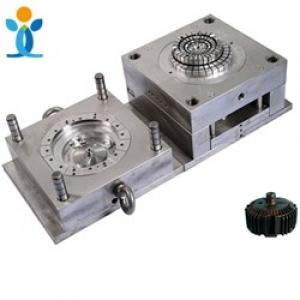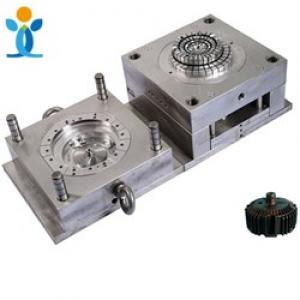how the modified PP infulent the quality of injection products, paint and assembly performance
How the modified PP infulent the quality of injection products, paint and assembly performance
The paint properties of PP + EPDM are largely determined by the properties of the material itself. As the polarity of PP itself is very weak, the main paint adhesion depends on the distribution of EPDM. EPDM is required to be evenly distributed on the product surface to ensure that the paint adhesion on each surface is the same.
In the process, it is required to form appropriate shear force in the flow process of the fluid. Through the difference in flow speed between PP and EPDM, EPDM is left on the external surface of the product to meet the paint requirements. However, in the actual process control, due to the requirements of considering other aspects of product quality, this aspect is easy to be ignored. In the early stage of coating process confirmation, it is necessary to verify the impact of injection molded parts on coating performance.
The influence of PP + EPDM on the product size is mainly caused by the die shrinkage of the material. As a rubber body, EPDM has certain contractibility under the action of pressure, so EPDM has certain contractibility under the action of injection pressure, and the product has certain elastic release after mold opening.
However, PP, as a crystalline material, has different crystallization rate at different temperatures, which will result in the change of shrinkage. In the paint process, the second baking will cause the recrystallization of PP, so there are many variables for the product size.
Melt index:
The melt index is to investigate the fluidity of materials. The low melt index and the difficulty of material flow will not only cause many defects on the product surface, but also cause some problems such as small size. However, if the melt index is too high and the fluidity is too good, the amount of melt in the cavity will be very sensitive to the injection and holding pressure under a certain pressure, and the stability of the process used to control the size will be poor.
Material shrinkage:
The deviation of material shrinkage will inevitably lead to the bad size of the product. For PP + EPDM, in addition to the properties of the material itself, the shrinkage also depends on the product shape, mold structure, injection speed, pressure and temperature. Generally, the material shrinkage provided by the material supplier is a range. If it is a fixed value, it refers to the reference value of mold shrinkage with a larger process window for a product of a certain shape.
EPDM content:
Because of the poor fluidity of EPDM, it will cause surface and size defects. EPDM can be compressed, which will cause local stress concentration. Too much EPDM content will cause difficulties in process control.
Talc content:
Talcum powder will also play a role in reducing the fluidity, which will have a negative impact on the product surface. At the same time, if the blending of talcum powder is uneven, it will also reduce the paint performance of the product.
Although, generally speaking, the material supplier will not provide the content of various components of the material. However, some other properties of the material can be judged. The elongation at break depends in part on the content of EPDM in the material. The higher the content, the greater the elongation.
At the same time, the higher the content of talc, the higher the strength. Therefore, under the same material properties, the technological properties of the material should also be considered. Generally, the ideal material selection should consider the process window as wide as possible.
With the improvement of product size requirements at present, materials with high shrinkage will be used relatively, because of high shrinkage, the influence of product size will be smaller due to changes in technology.



